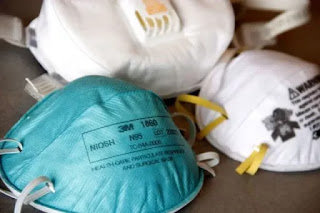
The Conficker worm has infected millions of Windows computers—and is set to be unleashed on April 1st, 2009. Here's what you need to know to keep yourself safe.
Symantec's got a pretty simple (and free) tool specifically for Conficker: Download this file on an uninfected computer, follow the steps, and you should be okay. (If you can't get to Symantec or other security sites, that's a good sign you've got Conficker.) Also, via PC Mag, here's the Conficker Working Group's page of repair of tools
Here is what LifeHacker says about it.
How Does It Spread?
The worm originally started spreading using a network attack against the file sharing services in Windows, but since it can automatically update itself, it adapted to spread through the autoplay feature on removable media like USB thumb drives, by adding a new option to open where you see "publisher not specified". This allows the worm to spread to systems already patched against the original vulnerability, so using anti-virus software is even more important, because once it's on your computer it can spread further.
Is My Computer Affected?
Most anti-virus software has already been able to detect and remove the Conficker worm for a while now, so you are probably not at risk as long as you keep up with your updates and have real-time scanning enabled.
To actually detect and remove the worm, you can use the freely available Microsoft Windows Malicious Software Removal Tool that can remove a large number of viruses—for a full guide, I've also written an article on how to scan and remove malicious viruses.
How Do I Stay Safe?
Staying safe from this, and many other viruses and worms, requires a combination of keeping your computer updated and using anti-virus software. Here's a couple of quick tips to follow:
- Make sure your system is fully patched using Windows Update, and update MS08-067 has been applied.
- Make sure your anti-virus is fully updated, enabled, and you've run a full scan.
- Make sure you are using strong passwords (see our guide to choosing great passwords).
- Disable the AutoPlay feature—which Conficker uses to infect systems.
- Make sure your firewall is enabled when you are on untrusted networks.
- Make sure your data is backed up—if you aren't sure what to use, see our five best Windows backup tools.
Keeping your system and your data safe is extremely important, so make sure to take some time out of your day to keep your system patched, updated, and virus-free. Hit the link for Microsoft's explanation of the situation, or check out my article on scanning and removing malicious viruses for the walk-through approach.


No comments:
Post a Comment